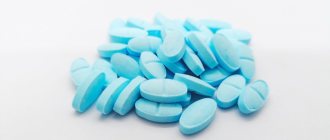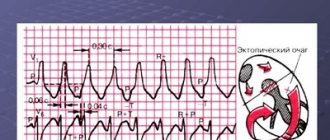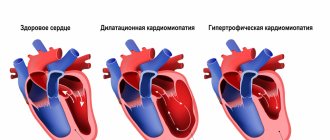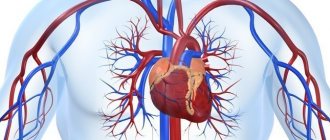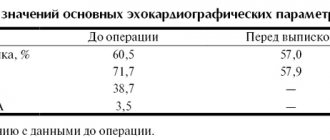According to the WHO definition, cardiomyopathies are cardiac pathologies that result in damage to the heart muscle in the myocardium, the middle part of the muscle fibers of the heart. The disease can appear against the background of heart and other diseases not related to the cardiovascular system.
The code for cardiomyopathy is ICD 10 in accordance with the international classification of diseases. The concept combines all pathologies in which the middle layer of muscle fibers of the heart is affected. The likelihood of occurrence remains very high in the case of arterial hypertension, coronary heart disease (CHD), and emergency conditions leading to damage to the heart valves.
In this case, it is advisable to study symptoms with changes in the myocardium in cardiomyopathy, and not all heart pathologies. These disorders can be caused by both disorders of individual organs and systems, and the body as a whole.
Cardiomyopathy - what is it?
Cardiomyopathy is a disease associated with a gradual increase in the volume of the left ventricle and, as a consequence, ending in the formation of heart failure. Heart disease can occur in acute or chronic form. It is quite common; a similar pathology is found in 5-8% of citizens. The situation is complicated by the fact that cardiomyopathies and myocarditis in most cases are discovered accidentally and at fairly advanced stages.
Request a call
Classification of cardiomyopathies and prognosis
As mentioned above, there are 2 main types of cardiomyopathy – primary and secondary. In turn, primary pathology is classified as follows:
- With a dilated cavity, the hearts expand, systolic function and cardiac output are impaired, and heart failure develops. This type is also called “ischemic cardiomyopathy”.
- With hypertrophic , the wall of the ventricles thickens by 1.5 cm or more. Depending on the nature of the lesion, there are symmetrical and asymmetrical, obstructive and non-obstructive forms.
- Restrictive cardiomyopathy can be obliterative or diffuse. The form depends on the nature of the disturbances in the contractile function of the heart muscle, which lead to a lack of blood volume in the chambers of the organ.
- Arrhythmogenic dysplasia is an uncommon phenomenon and is caused by large deposits of fat that lead to arrhythmia. This pathology is also called Fontan's disease.
Secondary cardiomyopathy of the heart is classified depending on the causes that caused it:
- alcoholic;
- diabetic;
- thyrotoxic;
- stressful.
As is clear from the names themselves, the causes of these forms of the disease are alcohol, diabetes or obesity, thyroid pathologies or stress.
Symptoms of cardiomyopathy:
Common symptoms of cardiomyopathy:
- swelling of the lower extremities, legs and ankles;
- an enlarged abdomen due to the accumulation of excess fluid;
- increasing shortness of breath;
- feeling of pressure in the chest area;
- general weakness and loss of strength;
- nagging pain and heaviness under the right rib.
Gradually, as the disease develops, blood stagnates in the liver and it increases in size. There is a rapid heartbeat, attacks of “fading” of the heart, and low blood pressure is observed. Over time, dizziness and loss of consciousness regularly occur, as blood circulation in the brain deteriorates.
Complications
- The main ones are heart failure and arrhythmias in their obvious clinical manifestations.
- When the walls of the ventricle expand, the heart valves stop working normally.
- Due to the large accumulation of fluid in the tissues and internal organs (lungs), edema appears.
- Embolism (formation of blood clots and blood clots) is an extremely dangerous complication that leads to heart attack and stroke.
- Sudden cardiac arrest is the most complex consequence of cardiomyopathy, which, in the absence of timely resuscitation, is fatal.
In order for the forecast to be as optimistic as possible, monitor your lifestyle and diet. And to avoid negative consequences, visit a qualified cardiologist as often as possible and undergo diagnostics using modern equipment.
Types of cardiomyopathy
Modern cardiology divides myocardial pathologies, united under the concept of cardiomyopathies, into different types.
Main types of disease:
- Disturbances of the heart chambers and their expansion are referred to as dilated cardiomyopathy. It is the most common and is very difficult. Gradually the heart begins to fail to cope with its function.
- Pathological enlargement of the heart is called hypertrophic cardiomyopathy. But it often causes the death of young people.
- The disease associated with the restriction of blood flow into the aorta from the left ventricle is classified as an obstructive type of cardiomyopathy.
- Postpartum peripartum cardiomyopathy, characteristic of women, etc.
What factors cause the primary form?
Primary cardiomyopathy can occur due to a viral infection, an autoimmune disorder, or idiopathic myocardial fibrosis. The cause may also be certain types of changes in the human genome. The influence of a genetic factor on the appearance of cardiac cardiomyopathy cannot be determined due to the fact that a huge number of proteins are involved in the metabolism of cardiomyocytes. In this case, pathology develops when changes appear in just one or several of them.
Symptoms characteristic of cardiomyopathy are caused by viral causes of the development of myopathies. This theory can be confirmed by antibodies that are detected in relation to the penetration of viruses . For example, the immune system reacts to cytomegalovirus, the causative agent of hepatitis C, as well as the Coxsackie virus. All these pathogens are capable of influencing DNA, with the subsequent development of pathology of the heart muscle.
The theory of the development of cardiomyopathy according to clinical recommendations as a result of the appearance of autoimmune changes in the body is not without foundation. The development mechanism is associated with the acceptance of myocardial cells as foreign by the human immune system. In this case, the body produces antibodies directed against cardiomyocytes. This opposite effect of immunity can be caused by viruses, bacteria, and various pathologies.
The restrictive form is characterized by myocardial rigidity with limited filling of the heart chambers with blood. A decrease in blood flow volumes leads to the development of diastolic dysfunction, against which heart failure appears with the manifestation of acute restrictive cardiomyopathy.
The cause may be idiopathic myocardial fibrosis, cardiosclerosis , in which cardiomyopathy appears, the diagnosis shows the replacement of the characteristic muscle fibers of the heart with connective tissue. They lose elasticity, are unable to contract, and disrupt the heart rhythm. The cause may be inflammatory processes in the myocardium or a previous heart attack. secondary cardiomyopathy occurs .
Cardiomyopathy: how to detect?
The key guarantee of cure for the patient is timely diagnosis. It allows you to detect pathology in time and receive effective treatment. With a routine examination, it is impossible to determine the presence of changes in the heart muscle. An increase in heart size is easily determined by echocardiography and electrocardiography. The attending cardiologist may additionally prescribe magnetic resonance imaging or radiocontrast ventriculography.
Request a call
Useful foods for cardiomyopathy
People with heart disease must adhere to a diet. Meals should be fractional and in equal portions. Number of meals – 5.
For cardiomyopathy, it is necessary to consume foods that improve blood circulation, strengthen the blood vessels of the heart and normalize metabolism. To do this, you need to increase the intake of magnesium and potassium in your diet.
It is necessary to add foods containing fatty acids (omega-3) to your diet. Omega-3 helps the body lower cholesterol levels, prevent blood clots and lower blood pressure (this is especially true for this disease, because almost all patients have high blood pressure).
Worth eating:
- flour products: crackers, toast, diet bread (salt-free);
- vegetarian soups (vegetables, cooked in vegetable oil and milk soups);
- seafood and low-fat fish (boiled or steamed);
- lactic acid products with reduced fat content (milk, yogurt, kefir, cottage cheese, sour cream, sometimes you can eat unsalted butter);
- chicken eggs (soft-boiled) or omelet (no more than 1 egg per day);
- cereals and pasta (made from durum flour);
- vegetables (baked, boiled), while you should be careful with raw vegetables (you can’t have problems with digestion and bloating - this makes it difficult for the heart);
- dried fruits (especially dried apricots);
- fruits and berries;
- honey and propolis;
- juices from vegetables and fruits (preferably freshly squeezed);
- weakly brewed tea;
- vegetable oils.
Traditional medicine for cardiomyopathy
To normalize heart function and gradually get rid of the disease, the following herbal teas and recipes will help:
- 1 Take 4 teaspoons of flax seeds (sowing), add a liter of water. Place on the stove and boil. Leave for an hour in a water bath. Filter. Drink this infusion 5 times a day, ½ cup, always warm.
- 2 Drink a decoction of motherwort. To prepare it, take 15 grams of motherwort and add hot water (half a liter). Leave to infuse for 7 hours. Express. Drink a glass 4 times a day. Take the decoction a quarter of an hour before eating.
- 3 Viburnum berries are an effective remedy for high blood pressure. The tincture from it has the same properties. To prepare this drink, you need to take 40 grams of ripe viburnum berries and place them in a thermos. Pour a glass of hot water. Cover the thermos lid and leave to infuse for 2 hours. After time, filter and squeeze the fruits. This is the daily norm. Drink 2 times.
- 4 The following collection of herbs (measured in teaspoons) will help the heart: lily of the valley flowers (1), mint leaves (2), fennel seeds (2), crushed valerian root (4). Stir. Pour ½ liter of boiling water over the herbs. Insist for an hour. Drink tea from this herbal collection twice a day, ¼ cup.
- 5 Also, for cardiomyopathy, a useful mixture prepared from 1 tablespoon of motherwort and 2 tablespoons of nettle is useful. Mix the herbs and place in a bowl with 250 milliliters of boiling water. You need to leave for an hour, then strain. Take 2 times a day, ½ cup.
- 6 Decoctions of licorice root, celandine, fennel, chamomile, elecampane root, peony petals, hawthorn inflorescence, mistletoe, yarrow, cinquefoil, and lily of the valley have healing properties for heart failure. You can prepare decoctions either from a separate type of herb or by combining them.
- 7 An infusion of hare cabbage tones, relieves inflammation, strengthens the immune system. This is extremely necessary for myocardial diseases. To prepare it, take 40 grams of fresh hare cabbage leaves and pour in 200 milliliters of warm water. It should brew for 4 hours. Filter. Drink 2 tablespoons four times a day.
- 8 “Kefir mash.” To prepare this drink you will need: ½ cup of kefir (homemade), 200 milliliters of carrot juice, 100 grams of honey, 30 milliliters of lemon juice. Mix everything. The composition should be divided into 3 doses. Each intake of this mixture should be taken ½ hour before meals. Store the mash in a cool place and cook for one day only.
- 9 An excellent restorative agent for disturbed metabolic processes in the body is chicory (both juice and decoction of the roots). It also contains cardiac glycoside. To prepare a decoction of its roots, take 10 grams of roots (chopped), put in a bowl, add 200 milliliters of water, boil for 10-15 minutes. Filter. Drink a glass of this infusion in 4 doses. The juice is prepared from the top shoots of chicory (20 centimeters and when the buds bloom). Wash the branches and soak them in boiling water for a couple of minutes. Extract the juice with a juicer or meat grinder. The resulting juice needs to be boiled for a couple of minutes. The course of treatment is 30 days (three times a day). You need to drink like this: take 1 teaspoon of chicory and honey per ½ glass of milk. Under no circumstances should a patient suffering from hypertrophic cardiomyopathy take the decoction! In this type of cardiomyopathy, overstimulation of the heart muscle can be fatal.
Dangerous and harmful products for cardiomyopathy
You should not eat foods that excite the nervous system, foods that cause a feeling of discomfort in the stomach and bloating.
This irritates the autonomic nerves, which in turn are responsible for the functioning of the heart. Failure to follow these recommendations and eating junk food will lead to heart failure. You should stop eating fatty meat foods (they contain a lot of cholesterol, which causes blood clots and plaques that impair blood circulation).
You should not consume a lot of salt. It retains fluid in the body. The result is high blood pressure and swelling.
The following foods have a negative effect on heart function:
- freshly baked baked goods, pancakes, pancakes;
- rich mushroom and meat broths, soups with beans and other legumes;
- confectionery;
- meat and fish of fatty varieties: duck, pork, goose;
- canned food (fish and meat), sausages, sausages;
- smoked meats, balyk;
- cream, full fat sour cream, margarine;
- fast foods;
- sweet carbonated water;
- coffee;
- black strongly brewed tea;
- alcoholic drinks;
- cocoa;
- semi-finished products;
- store-bought sauces, dressings, snacks;
- salty and spicy dishes;
- cabbage, green peas, radishes, mushrooms;
- garlic with onions;
- spices in large quantities.
Attention! The information is for informational purposes only and is not intended to make a diagnosis or prescribe treatment. Always consult a specialized doctor!
Authors: Anna Shelestun, Tatyana Eliseeva Ask a question
Rating:
0
/10
Votes: 0
Material usefulness 0
Reliability of information 0
Article design 0
Cardiomyopathy: treatment and drugs
At the first stage, a comprehensive diagnosis is carried out, the patient undergoes echocardiography and Holter ECG monitoring. After determining the type of disease and root causes, the cardiologist selects appropriate therapy and prescribes a course of treatment. Tactics will depend on many factors, including the anatomical features of the heart muscle.
How is cardiomyopathy treated:
- limiting and developing a personal plan for physical activity;
- following the regimen and lifestyle prescribed by the doctor;
- drug therapy and taking medications prescribed by a cardiologist;
- if necessary, surgical methods of intervention.
For the treatment of cardiomyopathy in our country, ACE inhibitors, diuretics, beta blockers, digoxin, anticoagulants and antiarrhythmic drugs are traditionally used.
Causes of primary and secondary cardiomyopathies
Depending on the causes, primary and secondary cardiomyopathy are distinguished. The causes of the primary disease are divided into 3 groups.
- Congenital ones develop even at the stage of formation of myocardial tissue in the embryo due to the bad habits of the mother, nutritional disorders, and stress.
- Acquired are the result of exposure to viruses, metabolic disorders, and toxic substances.
- Mixed ones combine one or more of the above reasons.
Primary cardiomyopathy is common in children. It can be not only congenital, but also acquired under the influence of reasons leading to disruption of the development of myocardial cells.
A secondary disease develops as a result of exposure to internal or external factors or other pathology. These include:
- accumulation of various pathological inclusions by cells;
- medications, in particular certain antitumor drugs;
- alcohol in large quantities and with prolonged use;
- metabolic disorders in the myocardium as a result of endocrine pathologies;
- unhealthy diet, obesity, diabetes, gastrointestinal diseases;
- long-term diets that cause a lack of vitamins and nutrients.
In Russia, mortality due to secondary cardiomyopathy is an extremely common phenomenon. And since the reasons themselves are very diverse, a high-quality and professional examination is necessary in each individual case.


